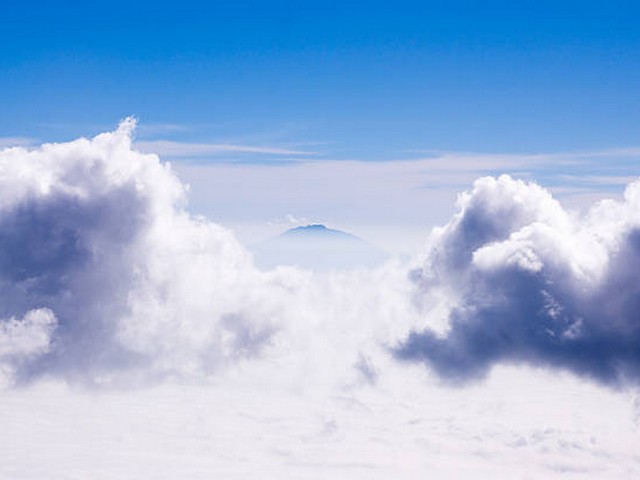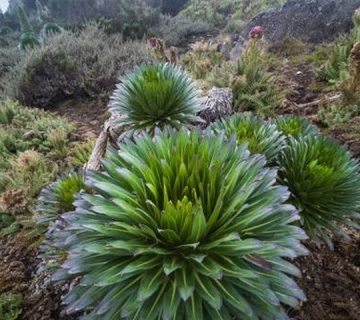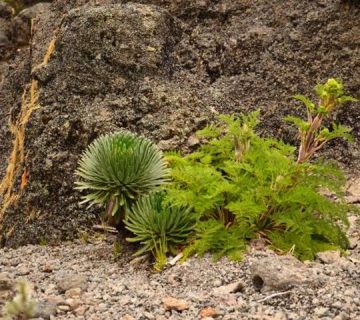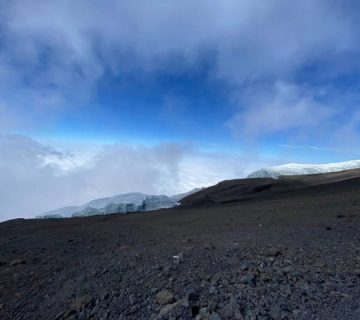Sustainable Water Use During Kilimanjaro Treks: A Journey of Conservation
At the Kilimanjaro Centre for Trekking and Ecotourism (KCTE), we understand that climbing the majestic Mount Kilimanjaro is not just an adventure but a privilege. As guardians of one of the world's most awe-inspiring natural wonders, we are committed to preserving its beauty and sustainability. Today, we explore a crucial aspect of eco-friendly trekking: Sustainable Water Use During Kilimanjaro Treks. Join us on this enlightening journey to learn how you can contribute to the conservation efforts while enjoying the trek of a lifetime.
The Essence of Water on Mount Kilimanjaro
Water is the lifeblood of Mount Kilimanjaro's ecosystem. From the lush rainforests at its base to the icy cap that crowns its summit, every drop of water plays a vital role in sustaining the life and beauty of this unique environment. However, as the mountain welcomes thousands of trekkers each year, the demand for clean water rises, posing a challenge to sustainability. Here's how we at KCTE are addressing this challenge, and how you can help.
1. Understanding the Impact of Water Use
The Challenge of Water Scarcity
Kilimanjaro's ecosystems are delicate. The streams and rivers flowing from its peaks feed into larger water basins, crucial for both the wildlife and the local communities. As climate change and human activities strain these resources, the importance of conserving water cannot be overstated.
Why Sustainable Water Use Matters
Sustainable water use ensures that we meet today's needs without compromising the ability of future generations to experience the majestic Kilimanjaro. It involves efficient water management techniques that reduce wastage and promote the recycling of water resources.
2. Innovative Practices for Water Conservation on Kilimanjaro
At KCTE, we implement several cutting-edge practices designed to minimize our ecological footprint and promote water conservation. Here's what we do:
Water-Saving Technologies
We equip our campsites with water-saving fixtures that reduce the flow rate and minimize waste. Solar water heaters and water purification systems allow us to use and reuse water efficiently, ensuring that our operations do not deplete the mountain's natural reserves.
Eco-Friendly Waste Management
Proper waste management is crucial in preventing water source contamination. We follow strict guidelines to dispose of waste, ensuring that streams and rivers remain pristine. Our eco-toilets and waste disposal units are designed to have minimal environmental impact.
3. The Role of Trekkers in Water Conservation
Bringing Awareness and Education
Every trekker ascending Kilimanjaro is a potential eco-warrior. We provide our clients with comprehensive briefings on the importance of water conservation, sharing tips on how they can make a difference.
Practical Tips for Trekkers
- Use Biodegradable Soaps: Minimize your impact by using environmentally friendly cleaning products.
- Carry a Reusable Water Bottle: Reduce plastic waste by refilling your bottle at designated points.
- Follow the ‘Pack It In, Pack It Out' Rule: Take all of your garbage, including plastic bottles, back down the mountain.
4. How KCTE Leads by Example in Sustainable Practices
We believe in leading by example. Our commitment to sustainability goes beyond water conservation. We actively participate in reforestation projects, invest in community education, and continuously work to improve our sustainability practices.
Continuous Staff Training
Our team receives regular training on the latest eco-friendly practices, ensuring that they can lead and educate trekkers effectively about sustainable tourism.
Community Involvement
We collaborate with local communities to ensure that the benefits of ecotourism are shared. By empowering local communities, we help protect Kilimanjaro's natural resources, including its water sources.
Making Every Drop Count: Join Us on a Sustainable Trek
Choosing to climb Kilimanjaro with the Kilimanjaro Centre for Trekking and Ecotourism (KCTE) means joining hands in a meaningful effort to conserve this magnificent mountain for future generations. By focusing on sustainable water use, your trek becomes more than just an adventure—it becomes a pledge to protect and preserve.
Why Book Your Kilimanjaro Adventure with KCTE?
- Expert Guidance: Our experienced guides are trained in eco-friendly practices, ensuring a safe and sustainable climb.
- Eco-friendly Policies: From water conservation to waste management, our policies are designed to ensure minimal environmental impact.
- Supporting Local Communities: Your trek contributes to local conservation efforts and community projects.
Embark on your Kilimanjaro journey with us, where every step counts towards conservation. Ready to make a difference? Book your trek today!
Frequently Asked Questions
Q1: How safe is the drinking water on Kilimanjaro?
A1: The water is generally safe after proper treatment. We ensure all water provided during the treks is boiled and filtered to meet safety standards.
Q2: Can I help with conservation efforts during my trek?
A2: Absolutely! We encourage trekkers to engage in conservation activities, like tree planting, which are often organized during treks.
Q3: What is the best time of year to trek Kilimanjaro for sustainable travel?
A3: Trekking during the off-peak seasons (e.g., rainier months) can reduce the strain on local resources. However, Kilimanjaro is accessible year-round, and our conservation efforts are continuous.
Q4: How does KCTE handle emergency situations related to water?
A4: We have robust protocols for emergency water supply, ensuring that our trekkers and staff have access to clean water at all times during the trek.
Embrace the challenge and become a steward of the environment. Climb with KCTe for a sustainable Kilimanjaro experience.




